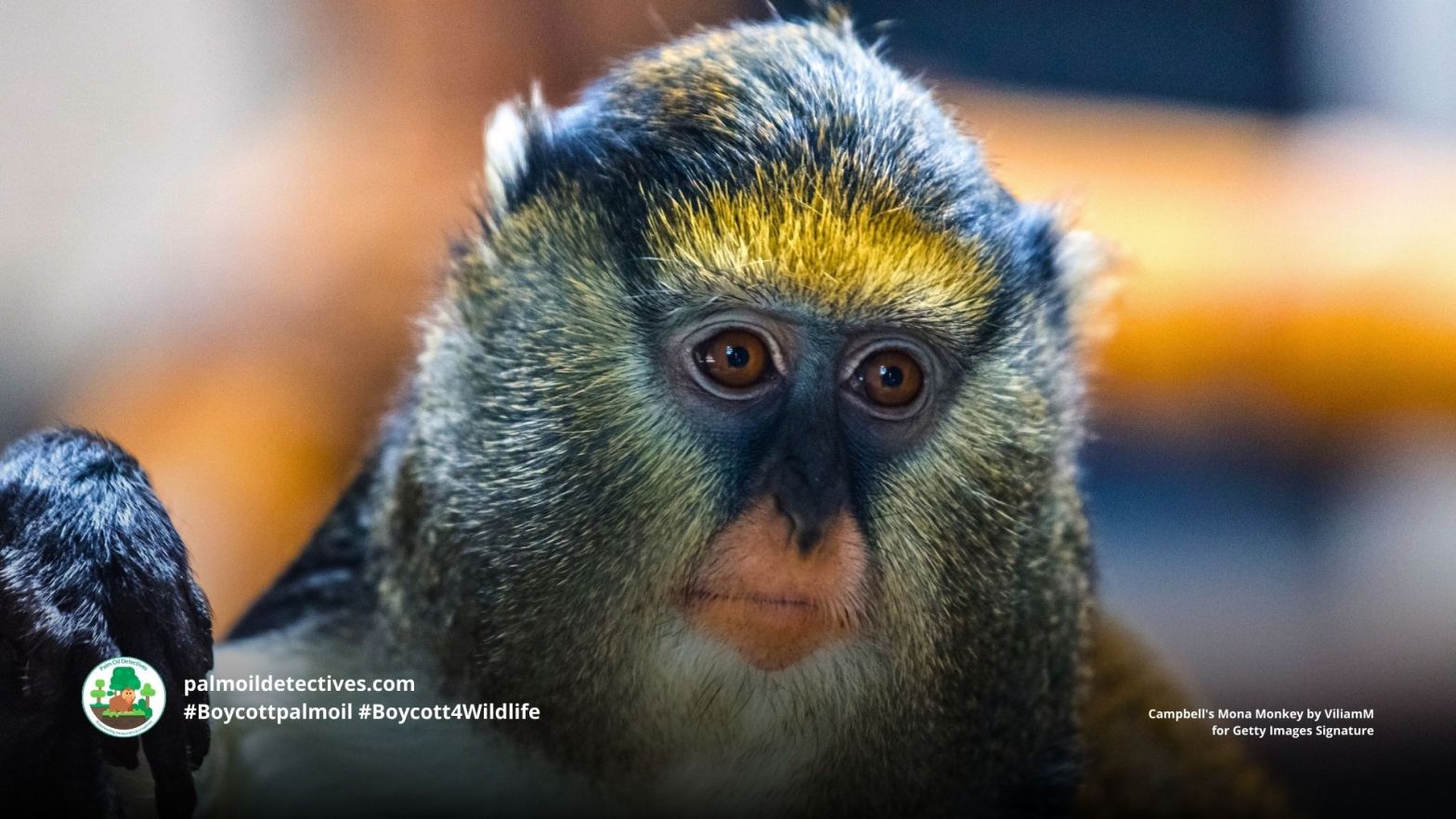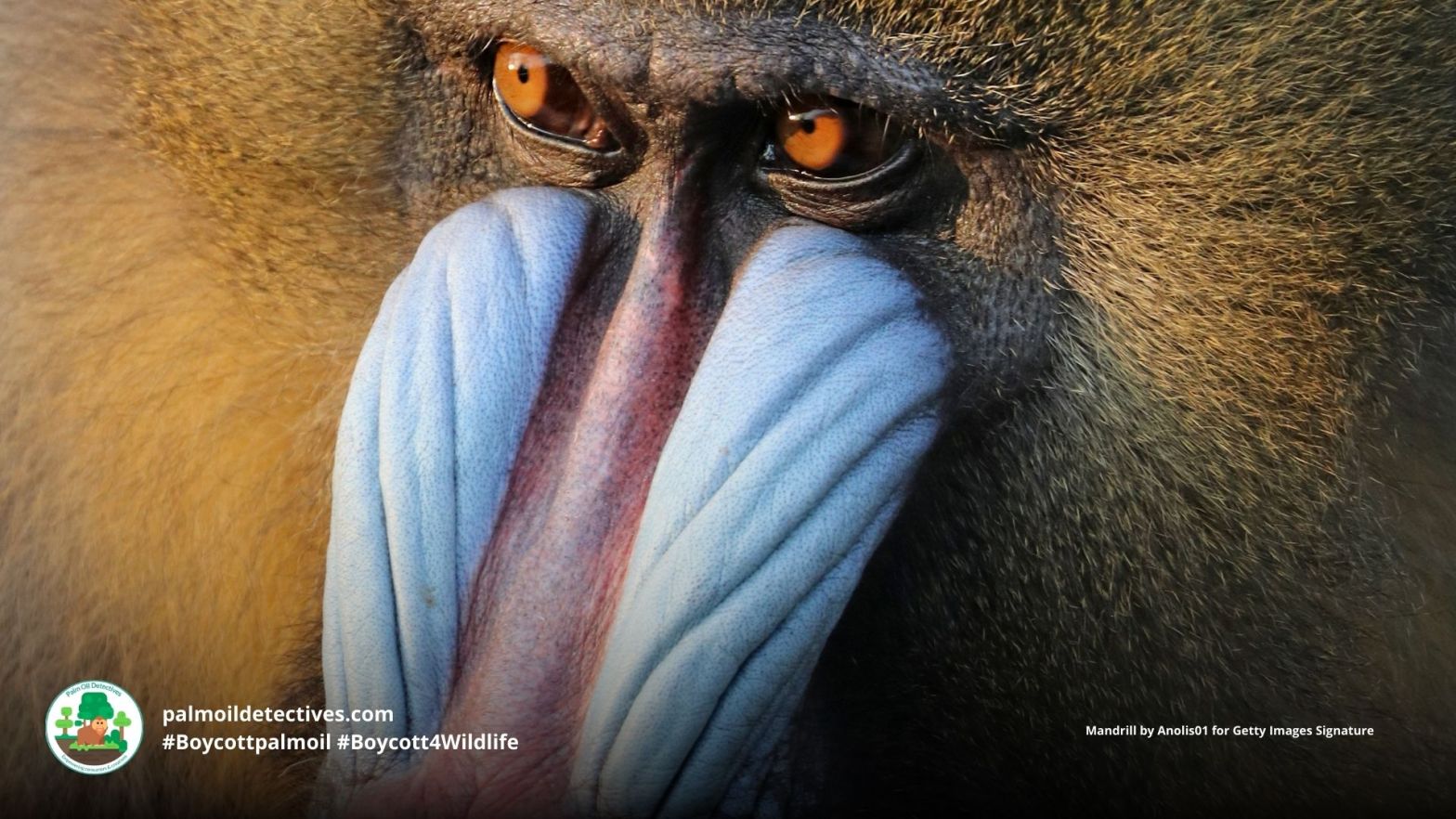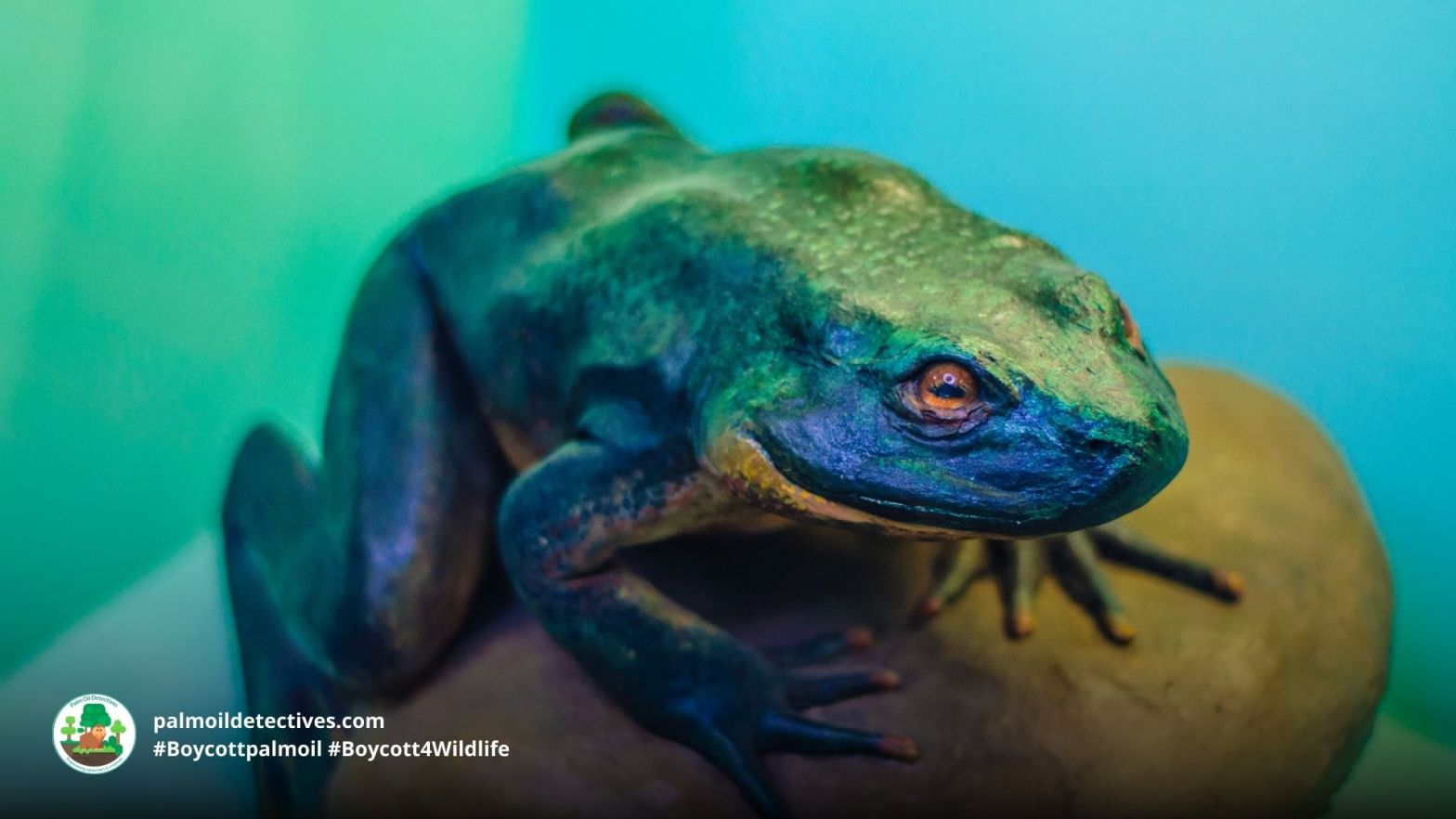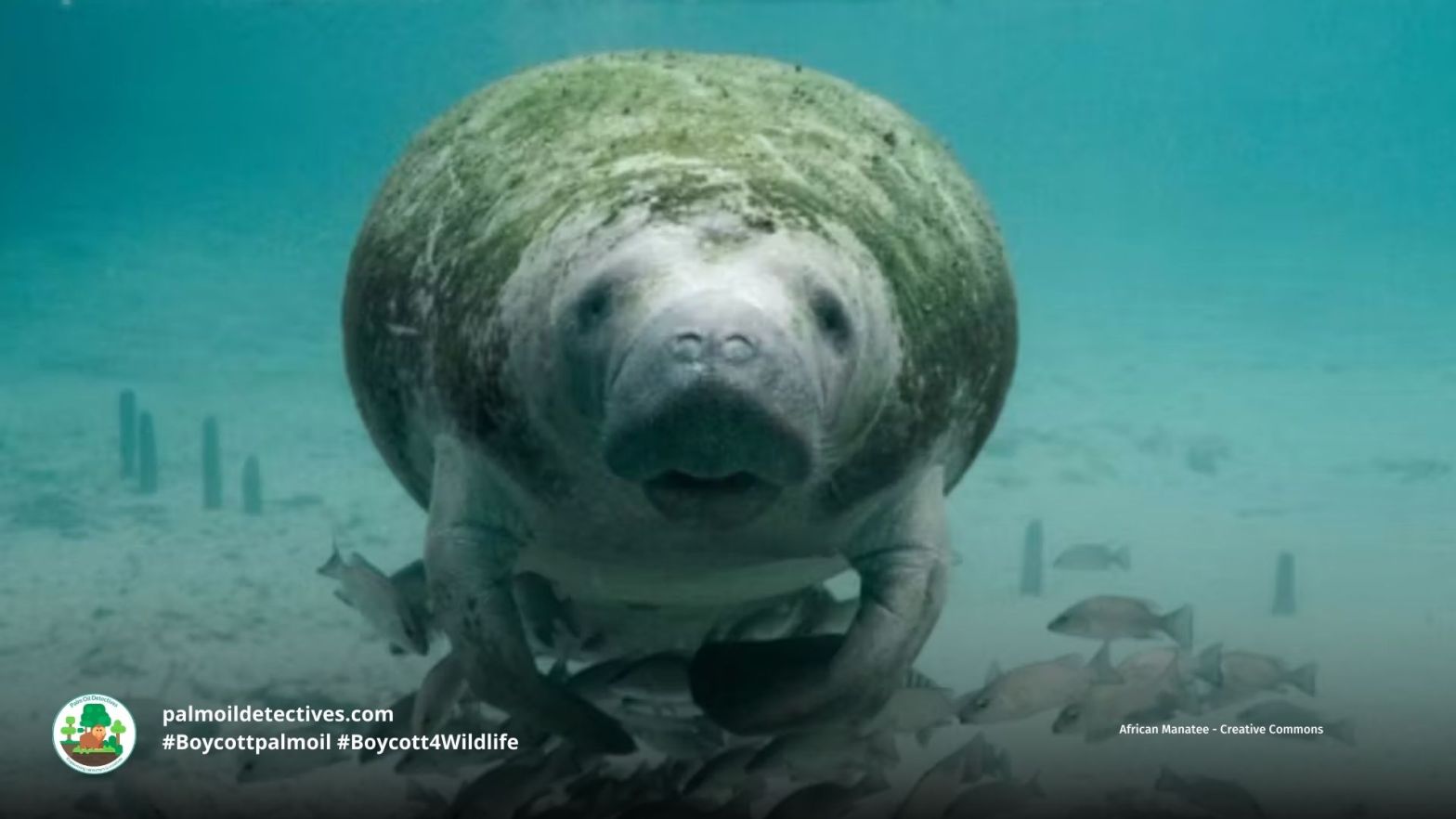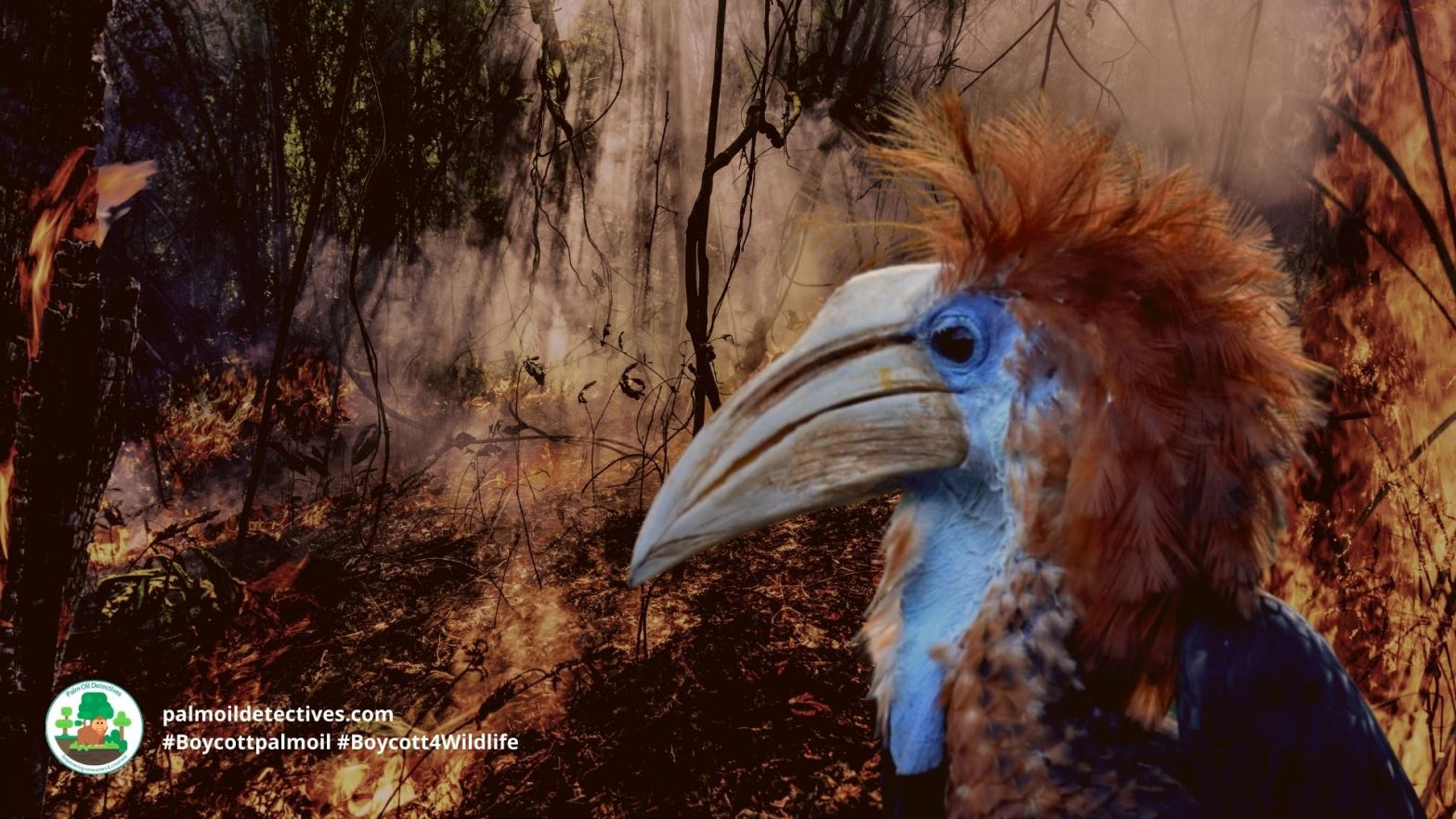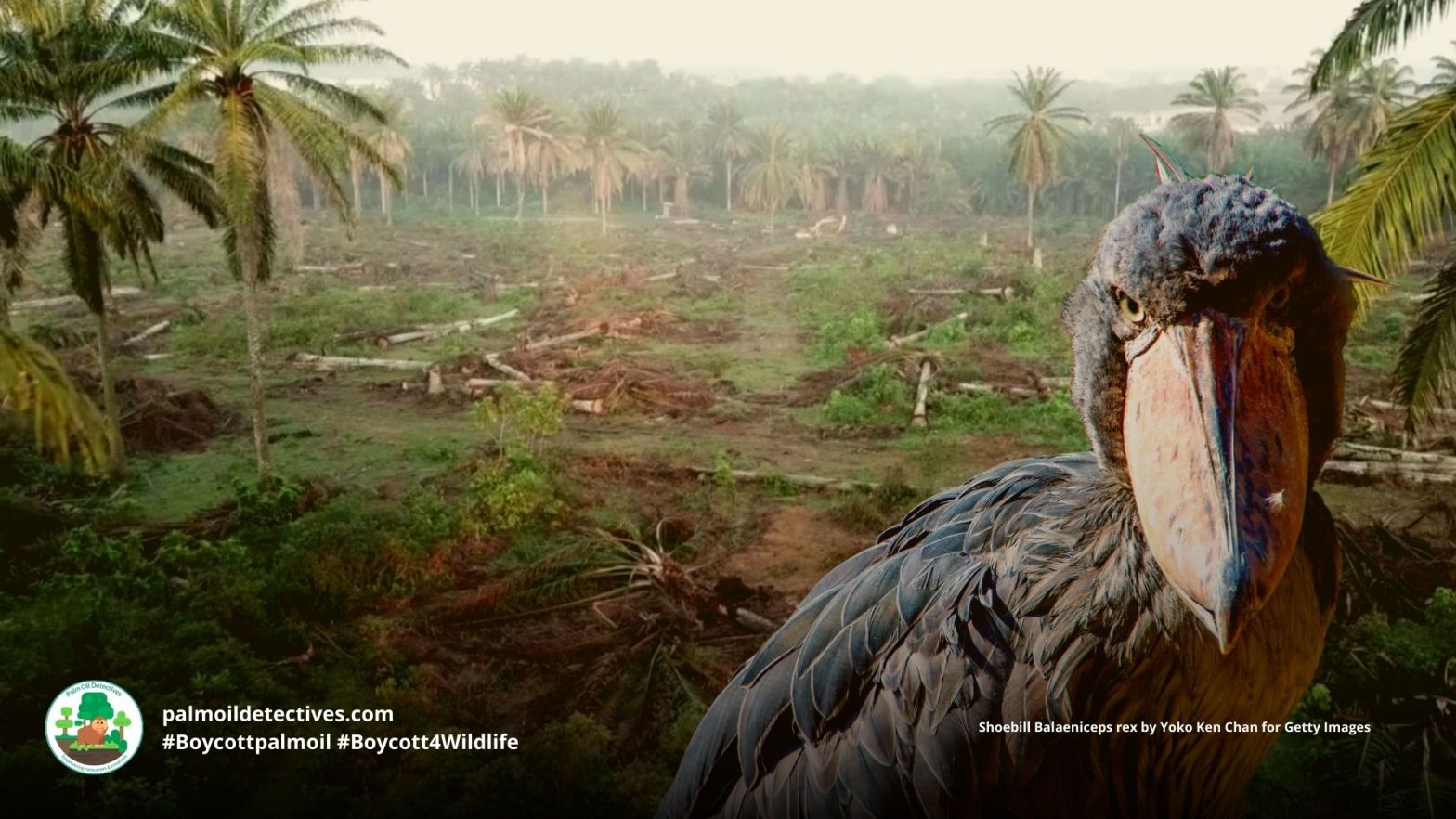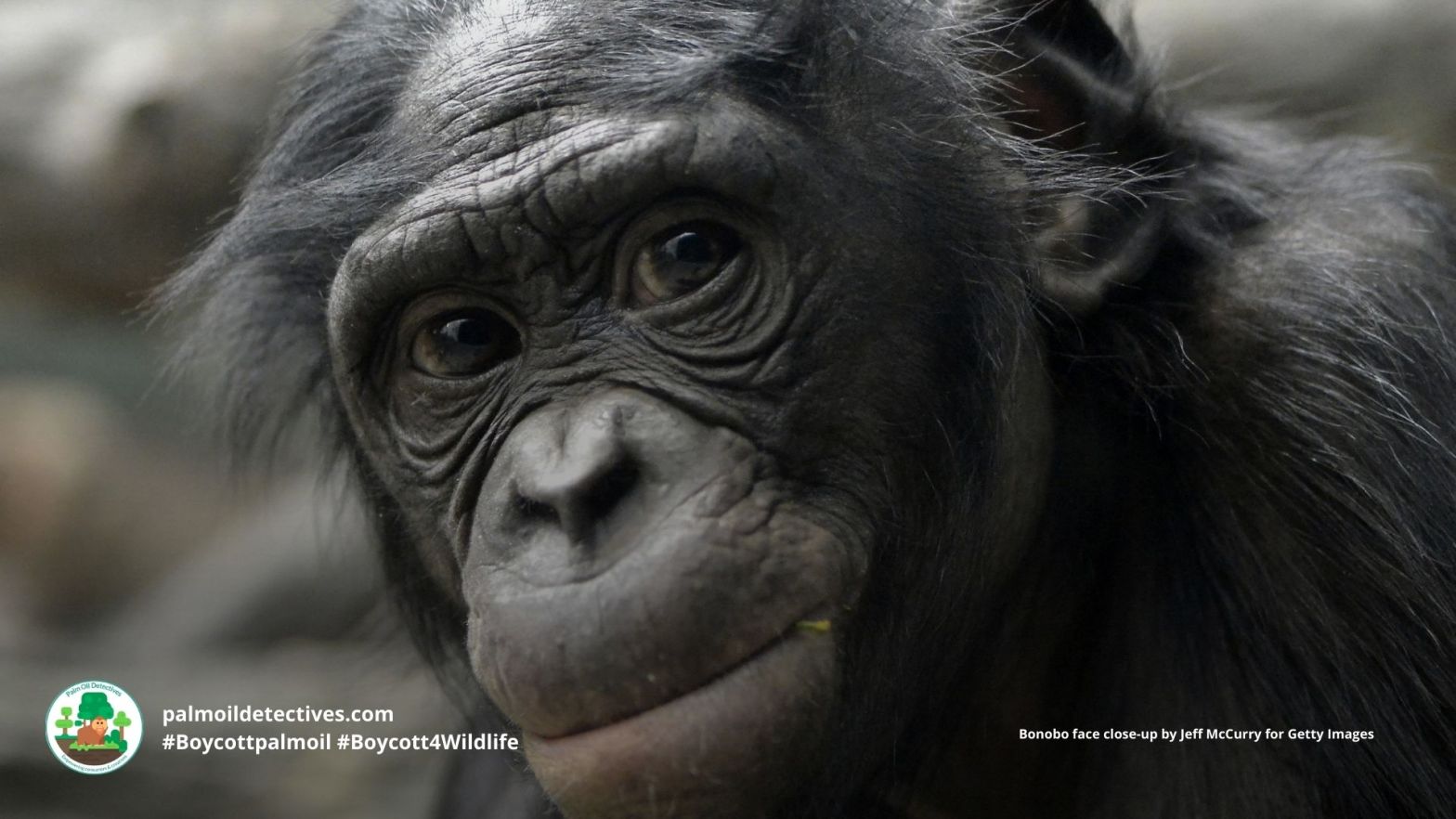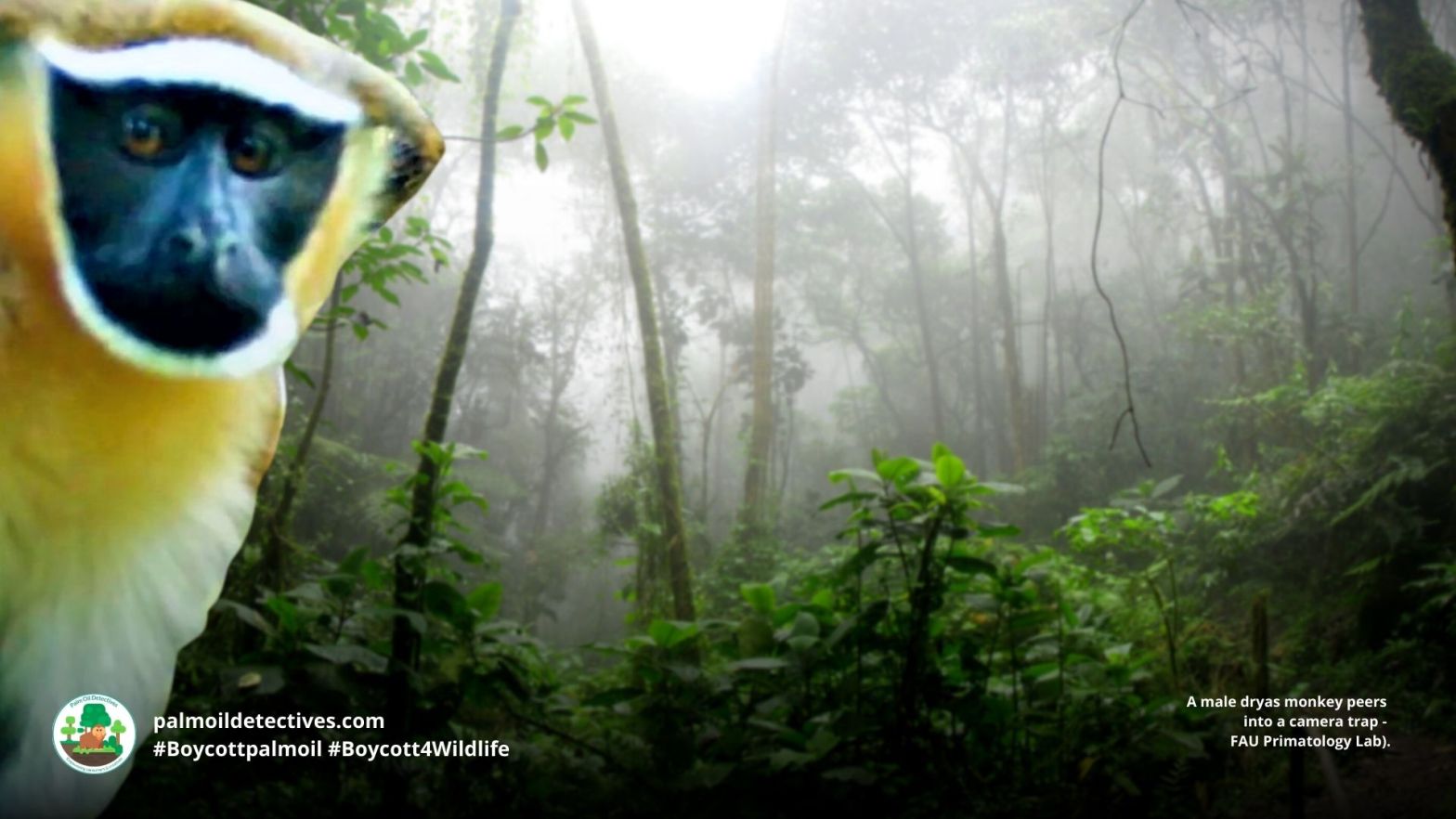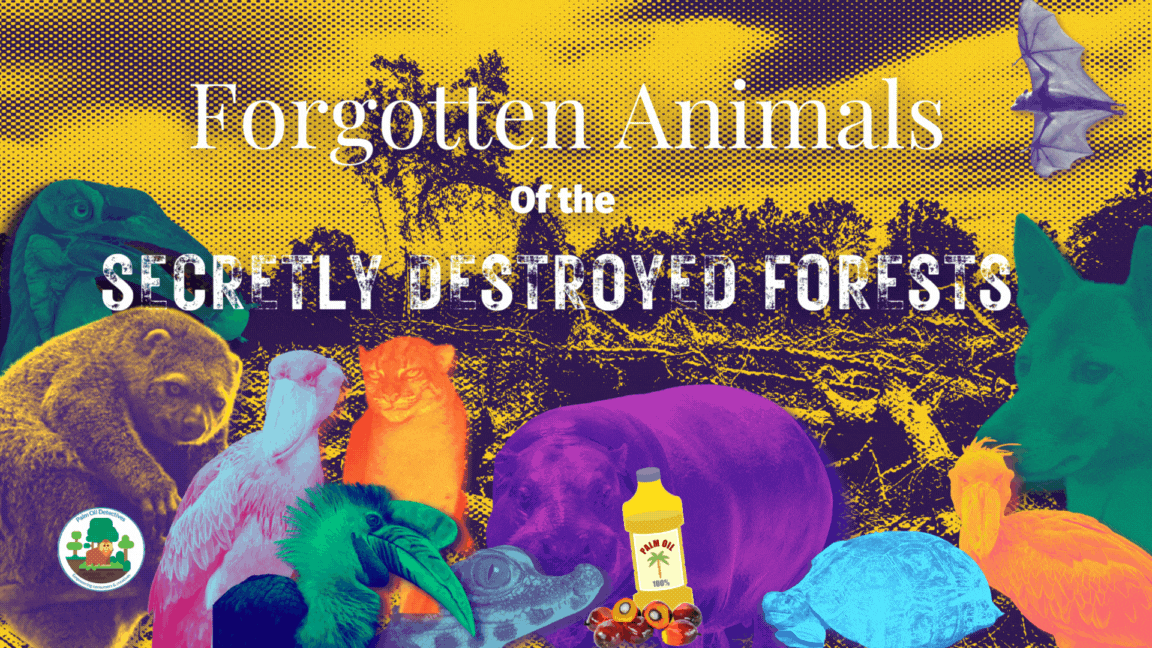Inquisitive and highly social Campbell’s Mona Monkeys are known for their intense hazel eyes and bright yellow brows. They use their large puffy cheeks to store food while they climb to the top of tree canopies to eat it. Males will engage in a dawn and dusk symphony of calling along with other species in a coordinated ritual. They are Near Threatened due to hunting and extensive forest loss throughout their range in West Africa for palm oil, coffee, cocoa and mining. Help them every time you shop by using your wallet as a weapon – #Boycottpalmoil #Boycott4Wildlife
Category Archives: Africa: Species Endangered by Palm Oil Deforestation
Mandrill Mandrillus sphinx
Magnificent #mandrills are undoubtedly one of the world’s most photogenic monkeys – famous for their brightly coloured and expressive appearance. Their bright blue rumps and vivid red, yellow and pink faces become even more deeply colourful when they’re excited. Males use their extra long canines for self-defence, but exposing their teeth can also be a sign of friendliness. Mandrills are important seed dispersers and a critical part of keeping the ecosystem in balance. These beautiful monkeys are vulnerable from palm oil, meat and cocoa deforestation and intensive poaching. Help their survival and #Boycottpalmoil #Boycott4Wildlife
Goliath Frog Conraua goliath
Goliath Frogs are the largest frog in the world and can grow as large as a domestic cat. These muscle-bound #amphibians lift heavy rocks to build nests and protect their young. They face extinction from #palmoil #deforestation.
Their nesting and reproduction is hugely dependent upon access to clean, fast-flowing rivers – for this reason the encroachment of industrial scale palm oil, cocoa and timber deforestation and p0llution of rivers is a direct threat to the existence of the goliath frog. Help them every time you shop in the supermarket and #Boycottpalmoil #Boycott4Wildlife
African Manatee Trichechus senegalensis
In the folklore of West Africa, there’s a fascinating character called Maame Water, believed to be a goddess of the sea, she symbolises wealth and beauty. Maame Water is none other than the African Manatee!
The Serer people of Senegal, the Gambia, and Mauritania hold the African Manatee in high regard, considering them sacred and a guardian of the secrets of the future according to their creation myth. This precious species is vulnerable from palm oil deforestation, hunting and pollution. They perform an essential service to mangrove ecosystems by keeping them healthy. Help them survive and #Boycottpalmoil #Boycott4Wildlife every time you shop!
Yellow-casqued Hornbill Ceratogymna elata
The yellow-casqued hornbill is one of the largest birds in the rainforests of West Africa weighing up to two kilos. They prefer to live high up in the rainforest canopy in Côte d’Ivoire, Ghana, Liberia, Mali and Sierra Leone. Their main threat is hunting and human persecution and they are possibly extinction now in some countries. Recent mass deforestation for mining, palm oil, cocoa and meat is also a threat and they are now vulnerable. Help them every time you shop and be #vegan, #Boycottpalmoil, #Boycott4Wildlife
Shoebill Balaeniceps rex
Known for their unnerving and intense stare and imposing, prehistoric appearance – shoebills are magnificent birds. There are less than 8000 individual birds left alive. They are vulnerable from palm oil, cocoa and meat deforestation, agricultural run-off, mining, hunting and human persecution. Help them every time you shop and be #vegan, #Boycottpalmoil #Boycott4Wildlife
Bonobo Pan paniscus
Bonobos share 98% of their DNA with humans and are one of our closest extant relatives. They are complex beings with intricate social relationships, they demonstrate profound intelligence and emotional sensitivity.
It is therefore fitting that 14th of February, Valentine’s Day is also the International Day to celebrate Bonobos – Bonobos provide a potent example to humans for how we can resolve conflicts through love and non-violent conflict resolution. They are endangered in DRC/Congo from infectious diseases, illegal poaching and deforestation for palm oil, cocoa and meat and mining throughout their home range. Help their survival every time you shop – be vegan and #Boycottpalmoil #Boycott4Wildlife.
Africa is becoming the new frontier for oil-palm plantations, which offers excellent economic prospects in countries with appropriate rainfall, soil and temperature conditions (Rival and Levang 2014). A staggering 99.2% of the Bonobo’s range is suitable for oil palm (Wich et al. 2014), highlighting the enormous risk the palm-oil industry will pose unless sustainable management plans are developed and implemented to protect great apes and their habitats (IUCN SSC Primate Specialist Group 2014).
Dryas Monkey Chlorocebus dryas
Dryas Monkeys are secretive and vividly colourful monkeys who hang on to survival in the forests of the Congo. There is estimated to only be 100-250 individual monkeys still alive. They are fruit-eaters and play a critical role in ensuring the dispersion of seeds and therefore the future health of the DRC’s rainforests. They are preyed upon by leopards in the Congo basin. However, the main threat they face is the illegal poaching and hunting by humans for bushmeat, along with deforestation for palm oil, mining and other commodities.
Protect them each time you shop by boycotting meat and palm oil in the supermarket. #Boycott4Wildlife
Southern Ground-hornbill Bucorvus leadbeateri
Territorial and highly social, Southern Ground Hornbills collectively raise their young in groups – a process of parental guidance that can take up to two years – the longest of any bird species known. They are considered to be a culturally important species to many indigenous peoples and are known as rain birds or thunder birds for their folklore association with bringing rain and ending drought.
They are found throughout the thin line of Peruvian rainforest and their range stretches across several countries: Bolivia, Ecuador, Peru, Venezuela and Colombia. Their main threats are habitat loss to mining, logging, cattle farming, palm oil and soy as well as hunting. Protect them each time you shop by boycotting meat and palm oil in the supermarket.
African Dwarf Crocodile Osteolaemus tetraspis
African Dwarf Crocodiles are timid nocturnal animals and solitary hunters. They predate mainly on small animals in rivers or nearby to the riverbank. They are also known as the Broad-Snouted Crocodile or the Bony Crocodile are the smallest extant species of crocodile in the world and are typically around 1.5 metres in length. They face persecution by humans and other animals and spend most of their daylight hours resting in burrows they make along riverbanks. They are vulnerable from #timber #palmoil #soy #meat #deforestation and hunting. Help them survive and be #vegan, #Boycottpalmoil #Boycott4Wildlife
Butterfly Viper Bitis nasicornis
Although they possess one of the most potent venoms of all snakes in Africa, Butterfly Vipers are surprisingly placid and won’t attack unless provoked or threatened. They are known by several common names: Rhinoceros viper, River Jack, the Rhinoceros horned viper and the Horned puff adder. They are appreciated for their vividly coloured markings that keep them camouflaged on the forest floor.
African Palm Civet Nandinia binotata
African Palm Civets are vital seed dispersers in African forests they are persecuted for #bushmeat. They are also threatened by mining and #palmoil #deforestation in #Gabon #Liberia.
Large tracts of rainforest where African palm civets live are threatened by commercial logging and large-scale oil palm plantations owned by foreign multinational companies. Say no to palm oil every time you shop, be #vegan and #Boycottpalmoil #Boycott4Wildlife in the supermarket!
Hippopotamus Hippopotamus amphibius
Hippopotamus Hippopotamus amphibius Extant (resident) Angola; Benin; Botswana; Burkina Faso; Burundi; Cameroon; Central African Republic; Chad; Congo; Congo, The Democratic Republic of the; Côte d’Ivoire; Equatorial Guinea; Eswatini; Ethiopia; Gabon; Gambia; Ghana; Guinea; Guinea-Bissau; Kenya; Malawi; Mali; Mozambique; Namibia; Niger; Nigeria; Rwanda; Senegal; Sierra Leone; Somalia; South Africa; South Sudan; Sudan; Tanzania, United Republic of;Continue reading “Hippopotamus Hippopotamus amphibius”
African Forest Elephant Loxodonta cyclotis
African Forest Elephant Loxodonta cyclotis Critically Endangered Extant (resident): Angola; Benin; Burkina Faso; Cameroon; Central African Republic; Congo; Congo, Côte d’Ivoire; Equatorial Guinea; Gabon; Ghana; Guinea; Guinea-Bissau; Liberia; Niger; Nigeria; Senegal; Sierra Leone; South Sudan; Togo Extinct: Gambia Rapid land use change, including palm oil plantations across their range is driving the direct loss andContinue reading “African Forest Elephant Loxodonta cyclotis”
Temminck’s Pangolin Smutsia temminckii
Temminck’s Pangolin Smutsia temminckii Vulnerable Extant (resident): Angola; Botswana; Burundi; Central African Republic; Chad; Ethiopia; Kenya; Malawi; Mozambique; Namibia; Rwanda; South Africa; South Sudan; Sudan; Tanzania, United Republic of; Uganda; Zambia; Zimbabwe Possibly Extant (resident): Congo Possibly Extinct: Eswatini The Temminck’s pangolin is a secretive, primarily nocturnal, mammal that is covered in overlapping plate-like scales,Continue reading “Temminck’s Pangolin Smutsia temminckii”
Black-Throated monitor Varanus albigularis microstictus
The Black-Throated Monitor is a mighty and large lizard reaching over 2 metres long. They are threatened by agriculture deforestation and #hunting for their leather and meat in Tanzania, Africa. Help them every time you shop and #Boycottpalmoil #Boycott4Wildlife
Western Lowland Gorilla Gorilla gorilla
Mighty, intelligent and gentle Western Lowland Gorillas are well-loved apes, they are #critically endangered by #deforestation and habitat loss for #palmoil, cocoa and mining along with disease and illegal poaching in #Congo #Nigeria #Cameroon Help them to survive every time you shop! Join the #Boycott4Wildlife
These are the forgotten animals of the secretly destroyed forests
Share to Twitter Don’t let the forests go silent! Here are 100s of forgotten animals of the secretly destroyed forests. They are nearing #extinction due to #palmoil #deforestation and other threats. #Boycottmeat #Boycottpalmoil #Boycott4Wildlife via @palmoildetect https://wp.me/pcFhgU-1Kd Globally, #palmoil is secretly destroying #rainforest and putting 1000s of animals close to the brink of #extinction –Continue reading “These are the forgotten animals of the secretly destroyed forests”
Golden Monkey Cercopithecus mitis ssp. kandti
The Democratic Republic of the Congo; Rwanda; Uganda Endangered Golden Monkey Cercopithecus mitis ssp. kandti The Golden monkey Cercopithecus kandti are Old World monkeys that live nestled deeply into the Virunga volcanic mountains of Central Africa. They are found in four national parks: Mgahinga, in south-west Uganda; Volcanoes, in north-west Rwanda; and Virunga and Kahuzi-Biéga,Continue reading “Golden Monkey Cercopithecus mitis ssp. kandti”
Southern Patas Monkey Erythrocebus baumstarki
Southern Patas Monkeys have a lanky and long-limbed appearance. Juveniles possess a reddish-brown crown which may become grey in adults. Their back and flanks are covered with shaggy reddish fur with their bellies are white or cream. There are sex differences and males are on average twice as large (4-7 kilos) as females. Southern Patas Monkeys are predominantly omnivores and feed on pods, seeds, gall, gum, flowers and young leaves acacia trees.

